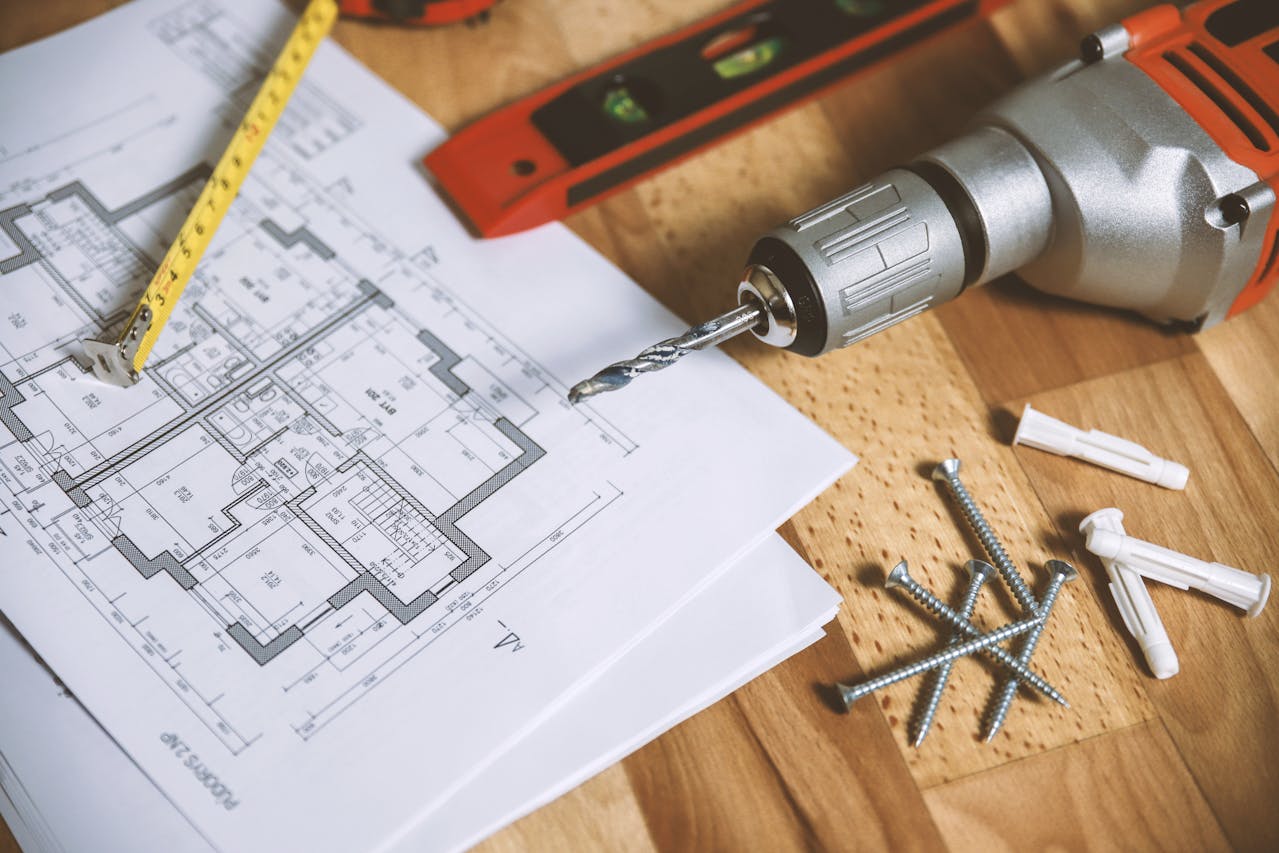Unlock Your Fix-and-Flip Profit Potential With Our Essential Guide
Investing in an undervalued property in hopes of transforming it into a profitable flip can come with an exciting rush. But before diving headfirst into renovations and repairs, finding the right financing is a key tool to have in your toolbox. These kinds of projects are what fix-and-flip loans were made for – a financial tool to fuel your goal of fixing up an old house. Whether you’re new to house flipping or maybe you’re looking for a refresher, you may be wondering how these loans work. Well, you’ve come to the right place.
In this article, we’ll be diving into everything you need to know about fix-and-flip loans to help you confidently navigate your next investment opportunity. Let’s get started!
What Are Fix-and-Flip Loans?
Fix-and-flip loans are a type of short-term financing that’s designed specifically for real estate investors who are looking to buy a property, fix it up, and resell it for a profit. The main purpose of a fix-and-flip loan is to empower investors to efficiently complete property flipping projects and maximize their potential for profit.
It’s important to note that fix-and-flip loans are often considered to be non-QM loans (non-qualified mortgages). In a nutshell, this means that they don’t follow the lending standards set by the Consumer Financial Protection Bureau (CFPB), so lenders who offer non-QM loans have more flexibility with setting their qualification criteria.
How Do Fix-and-Flip Loans Work?
Fix-and-flip loans provide real estate investors with the funds to buy a property and renovate it. Lenders usually assess the viability of the loan based on the potential value of the property after renovations and use this as the main criteria for qualification rather than the borrower’s personal finances.
Once the purchase of the property goes through, loan proceeds are used to cover both the purchase price and renovation costs. Then, it’s up to the investor to complete the renovations with the goal of increasing the property’s value. When renovations are finished, the property goes back on the market. After the sale closes, the proceeds are then used to repay the loan along with any accrued interest and fees.

Who Should Get a Fix-and-Flip Loan?
To put it simply, anyone who’s interested in fixing up distressed or undervalued properties for a profit and understands the potential risks of real estate flipping should consider getting a fix-and-flip loan. Whether you’re new or experienced to the world of home flipping, fix-and-flip loans are a great tool to fund these types of investment opportunities.
Overall, fix-and-flip loans can benefit several demographics of people, including, but not limited to:
- Experienced real estate investors
- Novice real estate investors
- Contractors
- Builders
- House flippers
What Are the Requirements for a Fix-and-Flip Loan?
Since fix-and-flip loans usually fall under the non-QM loan umbrella, it’s up to each lender to determine their own lending criteria. This means that you might see a wide variation on qualification requirements between lenders. Because of this, it’s recommended to reach out to lenders directly to find out what you would need before applying for a fix-and-flip loan.
While specific requirements can vary depending on the lender, we’ve listed Defy’s fix-and-flip loan requirements to give you an idea of what you might need:
- Minimum FICO score of 620+
- Maximum loan-to-cost (LTC) of 90%
- Maximum as completed value (ARV) of 70%
- Available for 1-4 unit investment properties
- No tax returns required
- Fixed interest rates with interest-only period during construction
- Approval based on historical experience
Fix-and-Flip Loan Interest Rates
Several factors can affect fix-and-flip loan interest rates, such as the lender, your credit score, and current economic factors. Due to the amount of variability, there’s no set interest rate among all fix-and-flip loans. However, compared to conventional loan interest rates, you can expect the interest rates for fix-and-flip loans to be a little higher. While you most likely won’t get rates as low as conventional rates, fix-and-flip loans open up the door to all of the possibilities investing in real estate can offer.
Fix-and-Flip Loans vs. Conventional Loans
Three main differences between fix-and-flip loans and conventional loans are the usage, qualification requirements, and length of the loan term.
With a fix-and-flip loan, as we covered in previous sections of this article, it’s used to provide funding for borrowers who are looking to quickly buy, fix, and resell a property for a profit. Since a fix-and-flip loan is fairly unique, it’s built with specific qualification criteria and loan terms that fit the designated purpose of the loan. Lenders usually focus on the potential after repair value (ARV) to determine qualification rather than using the borrower’s personal income. On top of that, the length of the loan term is typically much shorter than a conventional loan since fix-and-flip projects are meant to be short-term.
Switching gears to look at conventional loans, these are mostly used to finance primary residences, meaning a home where the borrower will live in. Because most borrowers who get a conventional loan plan to live in the home, lenders assess their personal finances as part of the qualification requirements to ensure they’ll have the ability to repay the loan. This includes taking a look at the borrower’s income, assets, debt, and credit score. Since most people plan to live in their primary residence for a much longer period of time than a property flipping project would take, the length of the loan term for a conventional loan is much longer – usually 30 years.

Fix-and-Flip Loans vs. DSCR Loans
These two loan types are primarily used by real estate investors, but there are some key differences between them.
Fix-and-flip loans were designed to provide funding for real estate investors who want to rehab or renovate an undervalued property, in hopes of gaining a profit once they resell it. Since the goal is to sell the property at a higher value, one of the main factors that lenders look at is the estimated after repair value (ARV) to determine whether it could be a profitable project rather than the borrower’s personal income. These projects are also typically done on a shorter timeline, which translates to a shorter loan term.
In contrast, DSCR loans are used for income-generating rental properties. DSCR stands for debt-service coverage ratio, which is calculated by dividing the property’s net annual operating income by its annual debt service. This ratio is then used by the lender to determine whether the property can “pay for itself”. Since this is the main qualification requirement that’s used for DSCR eligibility, the borrower’s personal income usually isn’t assessed. Compared to a fix-and-flip loan, DSCR loans are meant for a longer time frame, meaning they have longer loan terms on average.
Pros and Cons of Fix-and-Flip Loans
Pros:
- Provides leverage for a potentially profitable real estate investment for a fraction of the cost down
- Allows you to repay the loan with the proceeds from the sale
- Improves neighborhoods and communities by rehabbing older, distressed, or neglected properties
- Allows you to qualify with no tax returns
- Allows you to secure a lower interest rate with a private mortgage lender compared to a hard money lender
Cons:
- Potentially has slightly higher interest rates compared to conventional rates
- Has shorter loan terms
- Has real estate market fluctuation risk
Fix-and-Flip Loan Alternatives
If you don’t think a fix-and-flip loan is right for you, don’t worry – there are plenty of other options. For real estate investors, some other loan types to consider are:
- Debt-Service Coverage Ratio (DSCR) Loans: These loans are for rental properties that generate income. The DSCR is calculated by taking the property’s net operating income and dividing it by its debt service. Lenders use this figure to determine eligibility rather than the borrower’s personal income to see if the property can “pay for itself”. This loan type is ideal for real estate investors who have an income-generating property.
- Construction Loans: These loans are typically used for ground-up construction. Rather than getting the full loan amount in full, the loan proceeds are disbursed in installments as construction progresses. Construction loans can often also be used for fix-and-flip and fix-and-hold projects. Eligibility is usually determined by historical experience rather than the borrower’s personal income. This loan type is ideal for real estate investors who are looking to complete any type of construction project, whether it’s building from the ground up or fixing a property.
Beyond options for real estate investors, there are also several alternatives for those looking for a loan with more flexible qualification requirements. Non-QM loans are great for borrowers who have trouble qualifying for a conventional loan. Here are some options to consider:
- Bank Statement Loans: These loans use a borrower’s bank statement to determine the borrower’s income rather than traditional income documents like W2s, pay stubs, and tax returns. The lender will take the total deposits made within a certain time period and then divide it by the number of months (usually 12 to 24 months). This number gives them an idea of the borrower’s average monthly income to see if they’d have the ability to repay the loan. This loan type is ideal for self-employed individuals or anyone who has difficulty proving their income through traditional documents.
- Profit & Loss (P&L) Loans: These loans use a small business’ P&L statement to evaluate eligibility rather than the borrower’s personal income. The lender uses the P&L statement to assess the business’ cash flow to determine the borrower’s ability to repay. This loan type is ideal for small business owners.
- Asset Depletion Options: These loans use a borrower’s liquid assets in place of an income for qualification purposes. The value of the liquid assets are divided by the number of months of the loan term to determine how much can be “depleted” every month in order to pay for the mortgage. This loan type is ideal for high-net-worth individuals who have accumulated a large sum of liquid assets.

FAQs
- What is a fix-and-flip loan?
A fix-and-flip loan is a type of short-term financing that’s specifically designed to help real estate investors buy, fix, and resell a property for a profit. This process is also known as “flipping” a property, which is why the loan is called a “fix-and-flip” loan.
- How does a fix-and-flip loan work?
Fix-and-flip loans provide funding to cover both the property purchase and renovation costs. After selling, you would usually repay the loan with the proceeds from the sale.
- Are fix-and-flip loans non-QM loans?
Yes, fix-and-flip loans are often considered to be non-QM (non-qualified mortgages). This is because they don’t meet the strict lending requirements set by the Consumer Financial Protection Bureau (CFPB), meaning it’s easier to qualify for a fix-and-flip loan compared to a conventional loan.
- Who would be a good candidate for a fix-and-flip loan?
A good candidate for a fix-and-flip loan would be anyone who’s interested in flipping a property, whether they’re new or experienced.
- What’s the difference between a fix-and-flip loan and a conventional loan?
Conventional loans are typically used for primary residences, meaning that the borrower will be living there themselves as their main home. For this reason, conventional loans have a much longer term than fix-and-flip loans, usually 30 years. On the other hand, fix-and-flip loans are meant for buying, fixing, and reselling a property quickly, so they have much shorter terms and tend to focus on the property’s after-repair value.
- What’s the difference between a fix-and-flip loan and a DSCR loan?
A DSCR (debt-service coverage ratio) loan can also be used by real estate investors, but its purpose is to fund rental properties rather than property flipping projects. In order to qualify for a DSCR loan, the property typically needs a strong rental history or projected rental income. Whereas, fix-and-flip loans tend to focus on the property’s resale value after repairs.
- What are the requirements for a fix-and-flip loan?
Each lender will have their own qualification requirements for a fix-and-flip loan, but to give you an idea of what you may need, here’s a list of what we require at Defy:
- Minimum FICO score of 620+
- Maximum loan-to-cost (LTC) of 90%
- Maximum after repair value (ARV) of 70%
- Available for 1-4 unit investment properties
- No tax returns required
- Fixed interest rates with interest-only period during construction
- Approval based on historical experience
- Can I get a fix-and-flip loan with bad credit?
While challenging, it’s not impossible to get a fix-and-flip loan with bad credit. Since fix-and-flip loans are usually non-QM loans, lenders get to set their own credit score requirements. This flexibility means that there’s a higher likelihood of qualifying with bad credit if you’re able to find a lender that’s willing to look past it.
- Can I get a fix-and-flip loan with no down payment?
No, you typically would not be able to get a fix-and-flip loan with no down payment.
- What are the interest rates for fix-and-flip loans?
Interest rates for fix-and-flip loans can vary among lenders and depend on several additional factors like your credit score and economic factors. When comparing them to conventional loan interest rates, you can expect them to be slightly higher. However, keep in mind that this slightly higher rate can often be worth it to have the opportunity to invest in real estate.
- Where can I get a fix-and-flip loan?
Private mortgage lenders, like Defy, offer fix-and-flip loans and tend to work closely with a variety of different real estate investors. Since these types of lenders specialize in alternative financing, you’ll get the expertise and guidance that you need to feel confident in your next real estate deal.
- How are fix-and-flip and construction loans different?
Fix-and-flip loans provide funding to purchase an existing property and the renovation of it. Construction loans are typically used for ground-up construction, however, they can also be used for fix-and-flip or fix-and-hold projects as well.
- What are some alternatives to fix-and-flip loans?
Some fix-and-flip loan alternatives are construction loans, DSCR loans, and bank statement loans. If you already own a home, you can also consider a secured loan using your home equity like a home equity loan, HELOC, or cash out refinance. If you’re looking for a lender, Defy offers all these options and more – schedule a call with us to see which loan is right for you!







